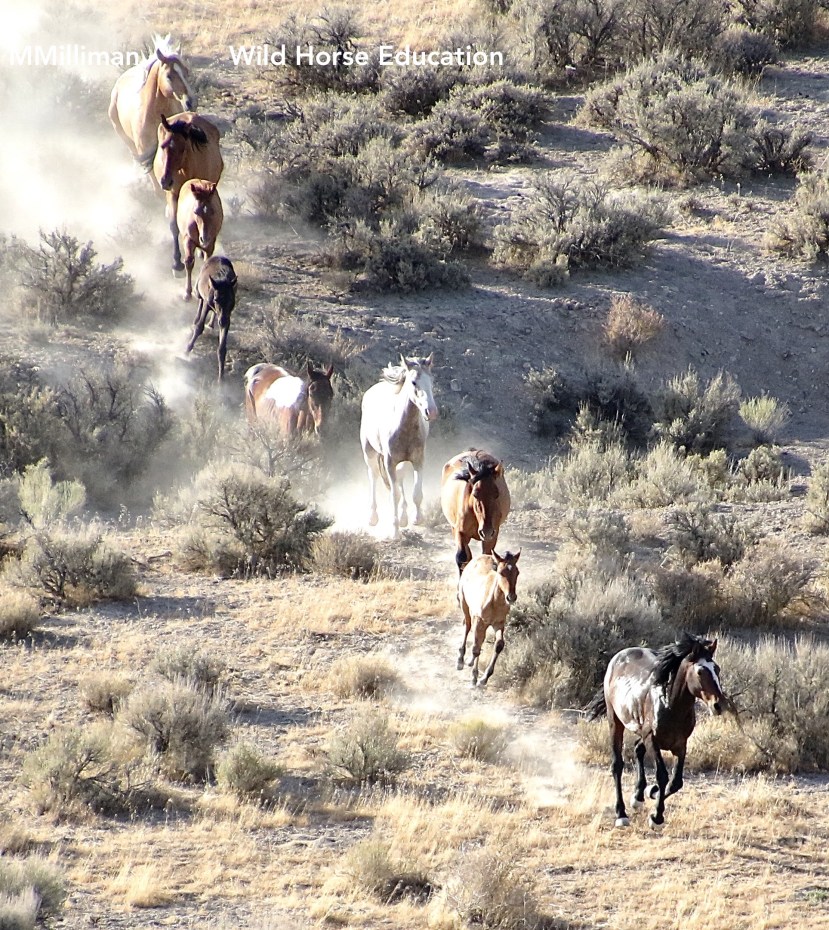You can see previous reports from the field on the ongoing roundup of wild horses at Swasey HERE
As of July 19, 459 wild horses have been captured. (BLM has not updated the error from day 1 on total breakdown. So we can not yet give you a total.)
The total captured on July 19 was: 61 (17 stallions, 32 mares, 12 foals)
A 5 year old mare died on July 18 due to a broken neck after a collision with the panels; the second run, at the second trap site. Our observer gave a warning on this trap configuration. Our data set shows more collisions occur when using this type of set up.

Today there was another collision with the panels. The grey paint mare in the center of the photo above. She hit the panel, fell, struggled and was then covered with a tarp. She rose again, visible injures to her face and her legs were unsteady. She was loaded onto a trailer and taken to temporary holding. We are very concerned about her head and neck and will update you if we receive more information.

Very unsteady after the collision, struggle, being covered by a tarp and rising.
A young colt falls. Rising, the youngster struggles to catch up and is then brought in by the chopper.


A youngster was roped, a stallion escaped.

Our observer set her 8 ft ladder into the bed of her pick up truck so she could see wild horses in the temporary corrals over the trucks and trailers and solid tarps.(if you want to see what holding looked like, you can see a video in our report on the water issue.)
A stallion appears to catch a glimpse of his foal being pushed down the alley.

Then he begins to call to his family. Other stallions and mares and youngsters all call to each other after capture. The family band is a tight bond, part of a larger herd, and is a key to your survival in the wild. The social bonds of wild horses are complex and fascinating.



For those of you following the water “situation,” panels have been removed. No wild horses were seen circling the area today, but were in the distance. They can come in, get water and leave. That is how wild horses visit busy water sources. The cows are still in the area doing what cows do, stay close to any water.


Our observer is back in the field today. More soon.
If you want to take action to help our wild horses? Make a call today.
Fertility control is a great tool, when justified in management planning. Adding more money to the roundup machine, fertility control (done primarily through helicopter capture), wont change anything if there is no planning document to make the system accountable. We will be heading into the largest years of wild horse roundups in history, with no plan.
We now have a fast “click and send” you can shoot off to your legislators: Click HERE.
Help us, help change reality for our wild ones. click HERE.
~~~~~~
If you are shopping online you can help Wild Horse Education by choosing us as your charity of choice on IGive or Amazonsmile.com
Categories: Wild Horse Education

You must be logged in to post a comment.